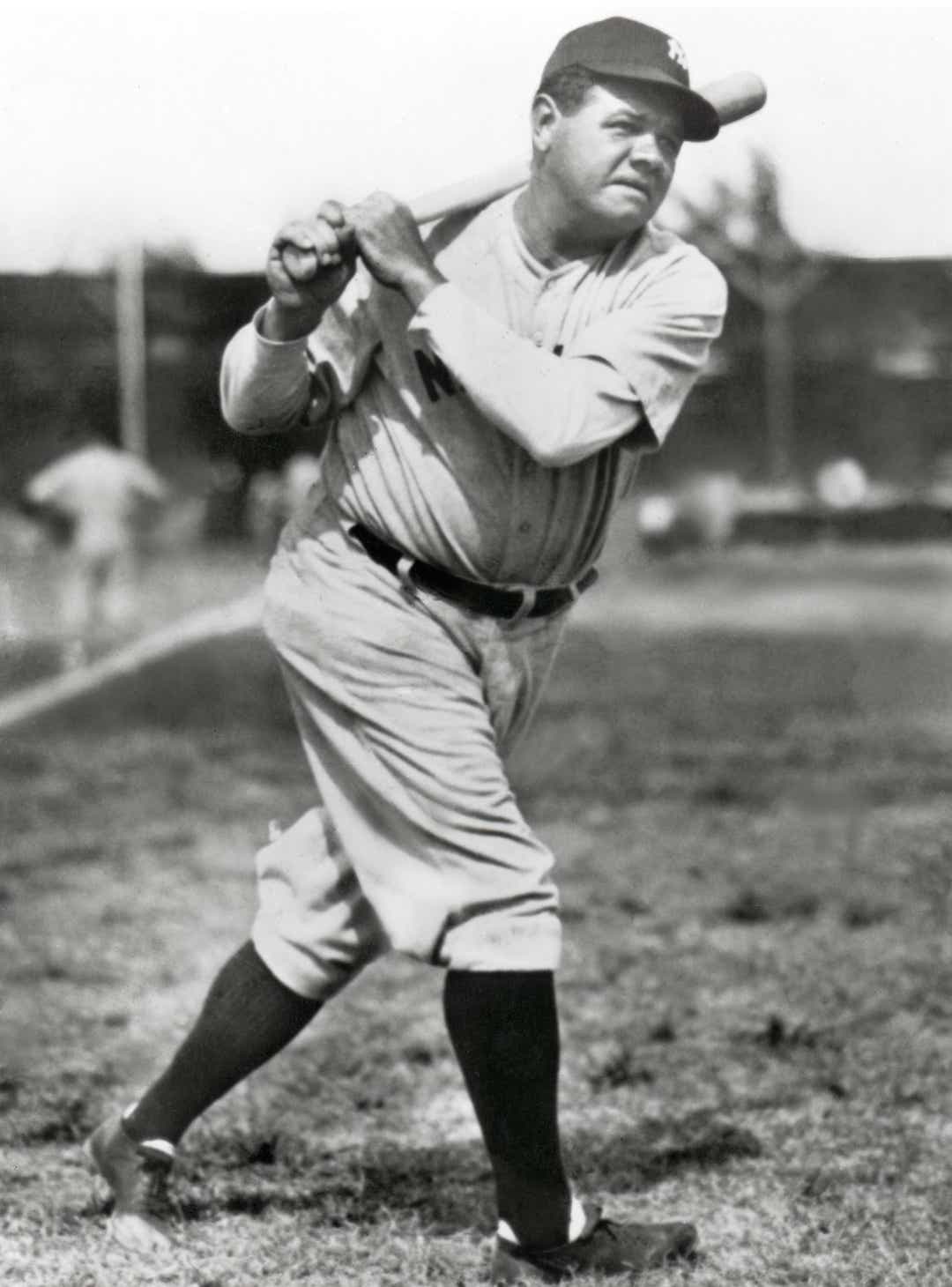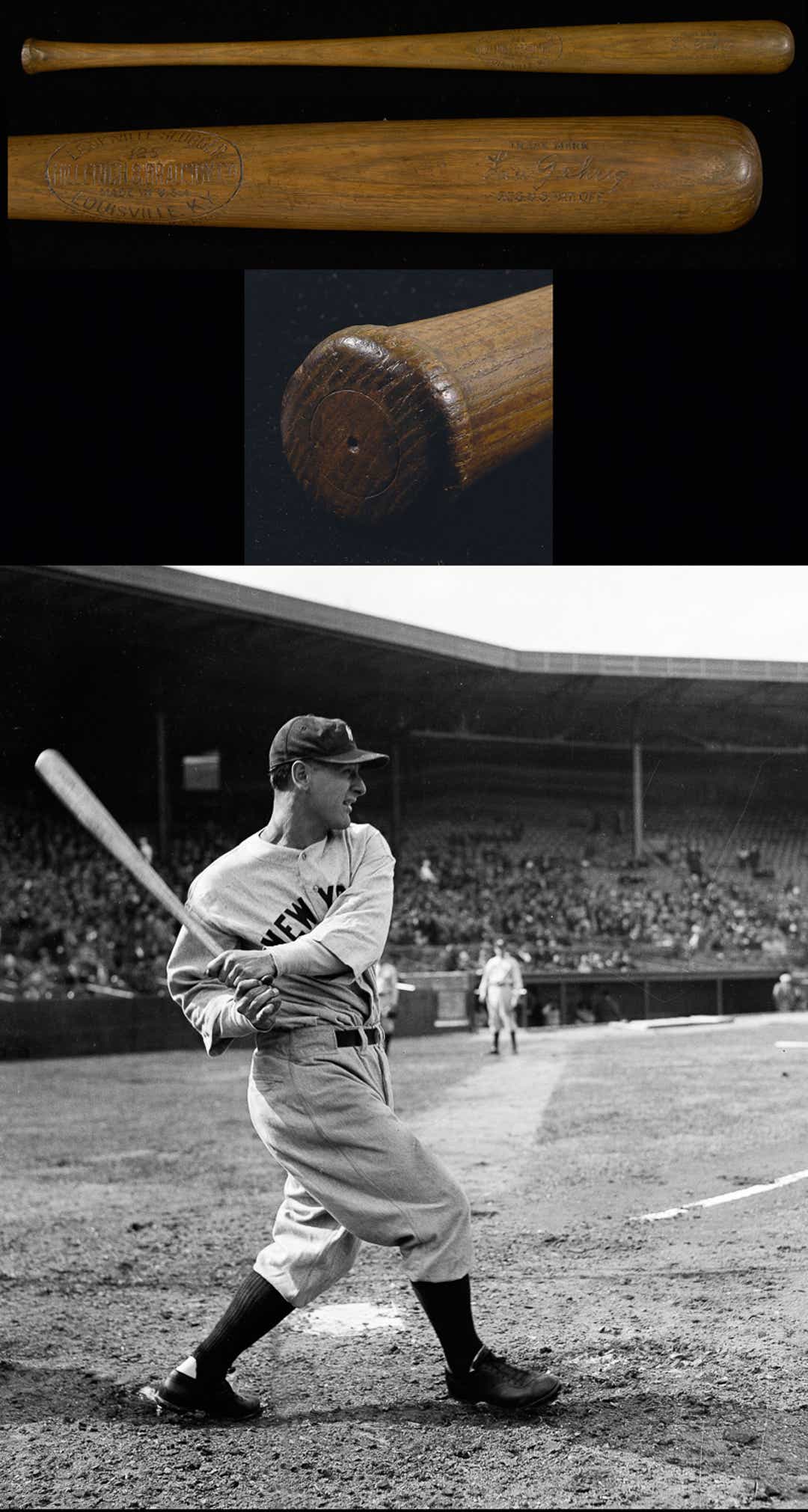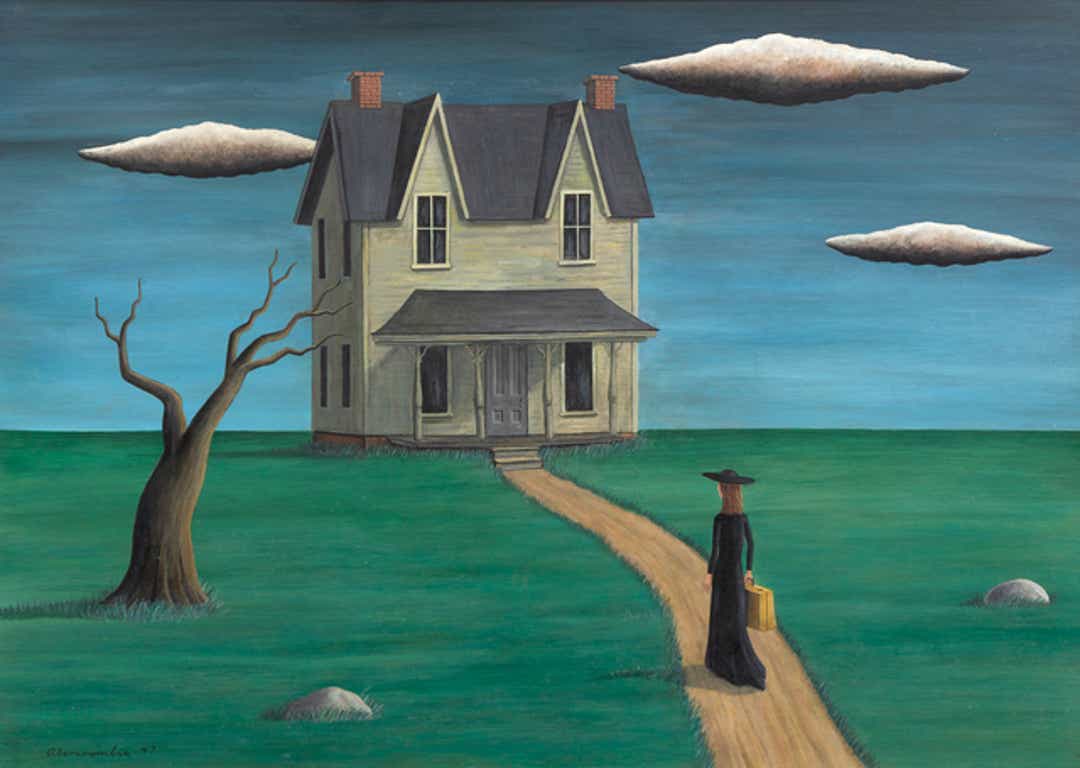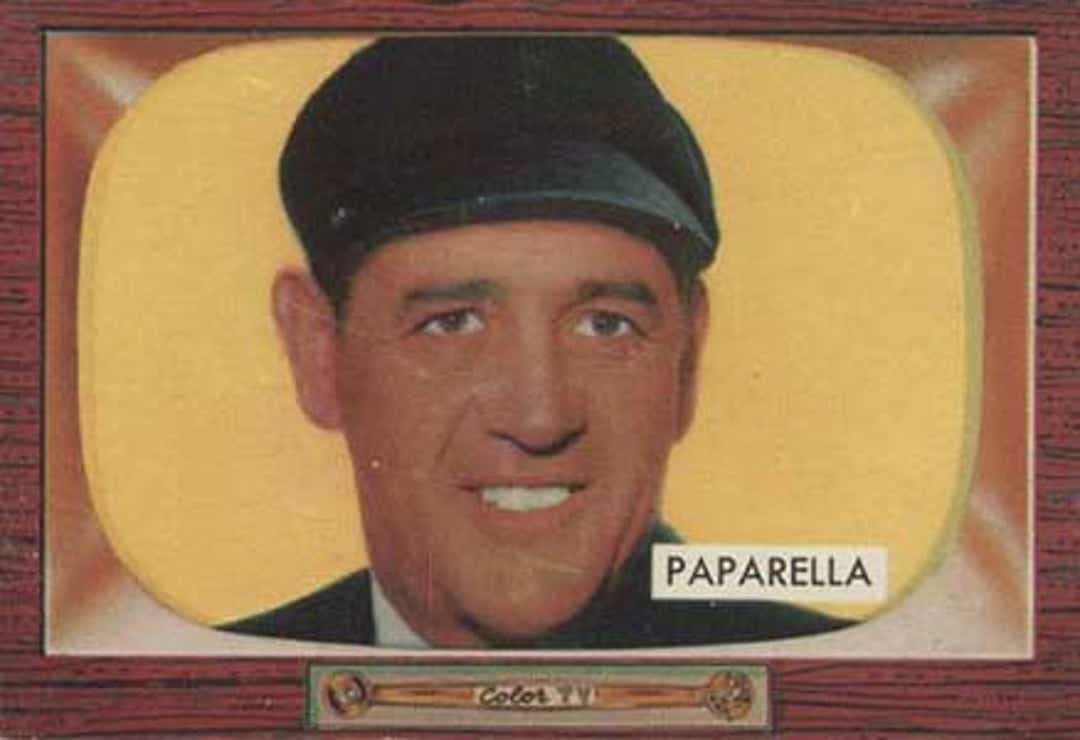The accused leader of an art and sports memorabilia forgery ring teamed with a hall of fame baseball coach and a Houston Astros draft pick while selling more than $1.1 million worth of phony paintings, bats and balls, including memorabilia linked to New York Yankees legends Babe Ruth and Lou Gehrig, court records show.
A federal search warrant affidavit, interviews and public records provide new details about what is described as a nationwide scheme headquartered in a forgery factory hidden deep in the woods of northern Michigan.
The document identifies the ringleader as Traverse City resident Donald “D.B.” Henkel, a 60-year-old artist who FBI agents say schemed with others to fraudulently sell forged paintings that mimicked the style of popular 20th-century painters and fooled the country’s top art experts. Investigators also say Henkel appears to be involved in counterfeiting sports memorabilia.

“This guy was an artist; he had flourishes,” said autograph expert Steve Grad, principal authenticator at Texas-based Beckett Authentication Services, who says he alerted the FBI to Henkel’s work years ago.
“But,” Grad said, “he was too perfect.”
Henkel is a well-known figure within west Michigan art circles. He has entered paintings and sculptures — including a life-size grandfather clock carved out of African mahogany — in ArtPrize, the highly competitive exhibition in Grand Rapids.
The investigation drew national headlines in July when The Detroit News revealed a team of more than 30 agents had descended on Henkel’s property deep in the woods outside Traverse City. The status of the investigation is unclear, and there have been no arrests made in the case.

The court filing listed probable cause to search Henkel’s 5,900-square-foot home and 2,000-square-foot, red horse barn at the end of a long, heavily wooded driveway off East Hoxie Road in rural Cedar, an unincorporated area of fewer than 100 people northwest of Traverse City.
FBI agents were led to the property by jilted buyers including one who had paintings scientifically analyzed and determined “based on the materials present in the painting, that it could not have been painted when the painting was dated,” the lead FBI agent wrote in the search warrant affidavit.
The affidavit describes vintage tools and techniques that could help someone make brand new baseball bats look like 100-year-old sports artifacts and contemporary paintings appear to be 91-year-old, weathered treasurers so legitimate looking that buyers paid six-figure sums.
The conspiracy started at least four years ago, according to the FBI, and involved eight probable forged paintings billed as previously unknown works by precisionist artists George Ault, Ralston Crawford and surrealist Gertrude Abercrombie.

The art was mixed with piles of clutter when FBI agents arrived at Henkel’s home on July 7.
The 4,000-square-foot main building was filled with paintings, artwork in progress, baseball bats and baseballs.
Investigators were intrigued by Henkel’s art supplies.
Those tools, according to the FBI, included $1,500 worth of supplies from Natural Pigments, a California company that specializes in rare and hard-to-find materials used in historical paintings “since prehistoric times up to and including the nineteenth century.”
Since 2016, PayPal accounts linked to Henkel’s email address made approximately 191 purchases, including vintage pens from the 1950s, 1960s and 1970s, according to the FBI, a baseball bat autographed by “Shoeless” Joe Jackson, reprinted Babe Ruth baseball cards and lumber for custom-designed baseball bats.
Agents found more evidence in Henkel’s trash.
In late May, FBI agents recovered a container of “Japan Drier,” a product that accelerates the drying time of oil-based paint, enamel and varnish, according to the search warrant application.
The evidence is “consistent with Henkel making paintings and sports memorabilia,” the lead FBI agent wrote in the search warrant affidavit.
That included old inks, pens, paints, photocopied documents with ripped up signatures, “as if the person who wrote the signatures found them unsatisfactory,” an FBI special agent wrote in the search warrant application.
“In addition, the barn contains other paintings that may be forgeries, as well as more paintings that appear to be in the process of being modified.”
There was so much inside the home and barn that agents came back the next day to finish the search.

‘Beautiful, fake or not’
The artwork alleged in the FBI investigation was expensive and convincing, fooling experts at some of the nation’s top art galleries in Chicago and New York City.
“We are one of the top American art galleries in the country, with really targeted expertise in this area, and we were not only ones,” said Elizabeth Feld, managing director of Hirschl & Adler in New York City.
The art house spent about $500,000 on paintings that investigators say were involved in the forgery scheme. That included buying the purported Ault paintings “Morning in Brooklyn” for $270,000 and “Stacks Up 1st Ave.” for $270,000.

“They were very beautiful,” she added, “fake or not.”
FBI agents believe “Stacks Up 1st Ave.” is likely a forgery.
According to the FBI, the painting was sold by William Eatinger, who until shortly after the FBI raid taught at San Gorgonio High School in San Bernardino, California.

Until last month, Eatinger, 60, also was a beloved baseball coach for more than 20 years and was elected to the California Baseball Coaches Association Hall of Fame in 2015.
“He works with kids from an impoverished area and just puts together a team every year out of what you would think would be a hopeless situation and makes them competitive and successful,” said Iran Novick, director of the coaches association.
Eatinger retired Aug. 14, five weeks after the FBI raid and no longer coaches the baseball team, school district spokeswoman Maria Garcia said.
Eatinger is a recurring figure in the investigation. In the search warrant affidavit, the lead FBI agent calls him a co-schemer who profited off the sale of likely forged paintings.
Eatinger’s email account was used to negotiate the sale of “Stacks Up 1st Ave.” in December 2018, according to the FBI. One email described the painting’s incomplete provenance.
“My father got it from his father, (my grandfather). Who got it from a woman, Leila Mechlin, who I believe was an art critic back in the day……that’s all I have on the provenance…..,” the email read.
Feld said her art house bought the painting. In January 2019, $270,000 was wired to Eatinger’s bank account, according to the search warrant affidavit.
The money, minus $40,500, was wired days later from Eatinger’s account to Henkel’s bank account, the FBI said.
Eatinger did not respond to messages seeking comment, including one left on his cellphone, which is listed in the FBI affidavit. He has not been charged with wrongdoing.
The FBI said Eatinger also sold sports memorabilia and gave most of the money to Henkel and Scio Township resident Mark Henkel, who appears to be Donald Henkel’s brother, according to the FBI.
In December 2017, Eatinger agreed to sell a Babe Ruth bat during an auction Feb. 24-25, 2018.
That date matches an event held by Heritage Auctions that featured a 1925 Babe Ruth game-used bat that sold for $60,000, plus commission.

The honey-colored bat by Hillerich & Bradsby featured Ruth’s name and included a certificate of authenticity signed by experts.
The experts, however, noted the bat lacked a model number and its measurements were smaller than other bats used by Ruth.
The bat did feature two characteristics found on other authentic Ruth bats, the experts wrote. Those characteristics were cleat impressions and ball marks on the left barrel of the bat.

“Ruth consistently gripped his bats with the center brand turned down resulting in contact with the ball on the left barrel above his branded name,” the experts wrote.
Chris Ivy, director of sports auctions for Heritage Auctions, said he would be surprised to learn the bat was a forgery considering it was vetted by experts.
“There were no red flags brought up about that particular piece,” Ivy told The News. “This is the first I’m hearing of it.”
After the auction, Eatinger received a $52,680 check and gave most of the money to Donald and Mark Henkel, according to the FBI.
Mark Henkel did not respond to messages seeking comment Monday.
Another bat reaped larger profits.
In November 2015, Donald and Mark Henkel received most of the $101,000 generated from the auction of a Lou Gehrig bat, according to the FBI.
The timing of the Gehrig bat auction and price tag appears to match one sold by Hunt Auctions of Pennsylvania. According to the listing, the Gehrig bat belonged to a descendant of a batboy who had met the New York Yankees legend.

The auction listing detailed the bat’s physical condition.
“Outstanding usage wear is evident throughout with grain swelling due to repeated contact and impressed ball/stitch marks,” the listing reads. “A handle crack has been expertly repaired and surface patina brought back to an appealing displayable level with a light treatment to the surface finish. There is a touch of additional wear with the knob end having two small chips along either side which follow the line of grain.”
Donald Henkel received $60,000 while Mark Henkel and others received money after the auction, according to the FBI. Mark Henkel’s wife, attorney Patricia Gravel-Henkel, is listed as the beneficiary who received $16,420.
She did not respond to messages seeking comment.
Follow the money
The FBI search warrant affidavit includes the couple’s address, a $698,000 home in Scio Township, which is the same address listed in the State Bar of Michigan lawyer directory.

Mark Henkel’s address was used in early 2019 when Donald Henkel was preparing to sell the purported Abercrombie painting “Coming Home,” according to investigators.
Donald Henkel provided the painting’s provenance, tracking its ownership back to the original sale, the FBI agent wrote.
Though shipping records indicate a declared value of $1,000 on the painting, it sold for $93,750, according to the FBI.
Investigators followed the money generated by other art sales.

Some of the money was used to buy a $320,000 Florida estate for Catherine Allen, the mother of Henkel’s child, according to the FBI. The estate is a few blocks from the Atlantic Intracoastal Waterway and Atlantic Ocean north of Daytona Beach, Fla., according to the FBI.
Allen, 57, who could not be reached for comment, also is referred to as a co-schemer. She sold one of the likely forged paintings, the Ault-piece “Hilltop Farm” in June 2018, according to the FBI.

“Hilltop Farm” sold at auction for $38,000 two years ago. Allen received $25,950 and $8,000 went to the seller of her new home, according to the FBI.
Allen and Henkel also own the northern Michigan property raided by FBI agents this summer, according to the FBI. The home, billed as “an Equestrian’s dream!” was listed for sale for $899,000 last week.
Henkel had help beyond relatives, according to the FBI.
Ray Paparella starred as an infielder for the Villanova Wildcats in the early 1980s. He finished with a .314 batting average and graduated as the university’s career leader in stolen bases.
His grandfather, Joe Paparella, was a baseball umpire for the American League for 22 years. He umpired in five World Series and four All-Star games before retiring in 1968.

After college, Paparella was drafted in the 23rd round by the Astros in 1984 later went to law school and now works in Florida.
“He had an amazing work ethic, was super fast but small. Really small,” said teammate Gerald Holtz, an infielder who was drafted in the fourth round in 1984 by the Baltimore Orioles. “He had all the tools to play professional baseball, except for probably the bat. He really wanted to be a professional baseball player, and probably nothing else.”
A year ago, Paparella approached a prospective buyer about the sale of a purported Ault painting “Burghal Barber,” the FBI agent wrote.
In the email, Paparella described the unknown painting’s provenance.
“On the bottom of the frame there is a typed piece of paper that says: wedding gift 1929 for Ben and Rosa Epstein given from their dear friend Esther Goldsmith,” the email reads. “On the front of the painting on the lower center on the frame is a brass name plate: Burghal Barber by George C. Ault. The painting is in excellent condition.
“Although attorney-client privilege prevents me from providing all information, the painting was obtained by my client from the estate of the nephew of the Epsteins,” the email reads.
The email was sent from the same account on file with the Florida Bar, according to the FBI.
Paparella shipped the artwork to the prospective buyer’s representative, who had two conservators analyze the painting, the FBI agent wrote.
The conservators were blunt.
The conservators “asserted the painting ‘is not what it is supposed to be’ and that Victim 3 believed the painting was ‘an elaborate fabrication,'” the FBI agent wrote.
Paparella, who did not respond to messages seeking comment, continued trying to sell artwork for Henkel, the government alleges.
At the time of the raid, Paparella was trying to consign an unknown painting “Flour Mill” by Crawford, according to the affidavit.
Paparella’s college friend, Holtz, said the allegations are shocking.
The two lost touch after college except for a brief meeting a few years ago when Holtz gave Paparella tickets to a Villanova basketball game, and a subsequent phone call, Holtz said.
“He’s a good guy,” Holtz said. “He was a little clandestine about the last 30-some odd years, I’ll just leave it at that.”
rsnell@detroitnews.com
Twitter: @RobertSnellnews